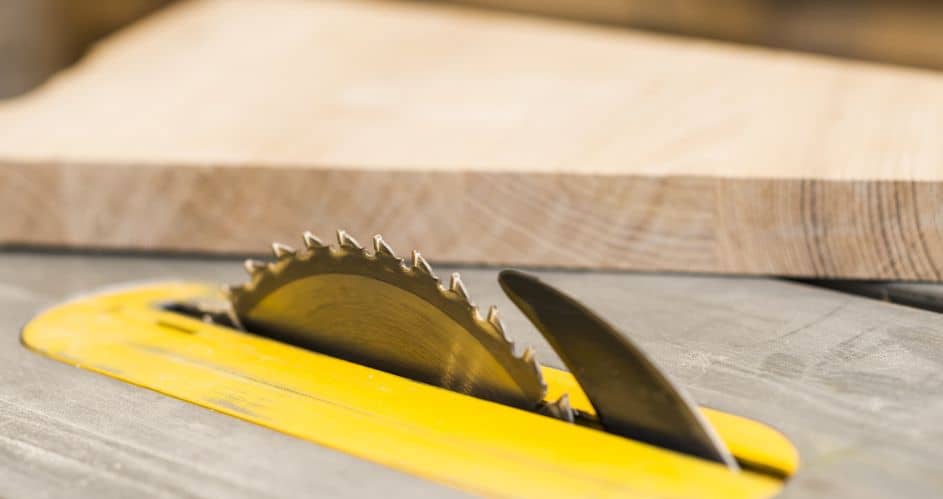
Woodworkers, carpenters, and DIYers looking for friendly, stable lumber often wonder – which one to choose rift sawn vs quarter sawn boards? Each method makes boards that look and perform differently.
Rift sawn and quarter sawn refer to how the lumber is cut from the log. The techniques create boards with different grain patterns, stability, and looks.
Understanding the pros of rift sawn vs quarter sawn lumber lets you pick the right stuff for projects from furniture to framing. One of these lumber types will probably work if you want maximum stability, excellent looks, or both.
What is Rift Sawn Lumber?
Rift sawn lumber is made by cutting logs at an angle to the growth rings. This makes boards with grain that’s 30-60 degrees off the face. The grain stays straight and uniform.
How Rift Sawn Lumber Comes Out
To make rift sawn boards, the log is quartered lengthwise first. Then each quarter is sliced into boards by angled cuts parallel to the pith. But the cuts are 15-30 degrees off the quartered face to get that rift angle. Multi-blade saws allow high yield and speed.
Advantages of Rift Sawn Lumber
1. Great Stability –
The angled grain reduces expansion and contraction from moisture changes across the width. This minimizes warping and cupping.
2. Nice Looks –
While less dramatic than quartersawn, rift sawn has subtle ray fleck patterns with long, straight grain lines. The look is in between plainsawn and quartersawn.
3. Durability –
In addition to stability, the angled grain gives excellent strength and wear resistance along the edge and face.
What is Quarter Sawn Lumber?
Quarter sawn lumber is made by radially cutting logs into four quarters, then slicing each quarter to create boards with grain lines perpendicular to the face. This results in unique vertical grain patterns.
How Quarter Sawn Lumber Comes Out
Logs are first cut into four quarters lengthwise to produce quarter-sawn boards. Each quarter round log is then sawed into boards with the growth rings oriented perpendicular to the board face. Gang saws allow efficient quarter sawn production.
Advantages of Quarter Sawn Lumber
1. Excellent Stability –
Like rift sawn, the vertical grain minimizes expansion/contraction across the width, reducing warping.
2. Cool Grain Patterns –
The vertical grain makes fantastic dots, stripes, and other neat patterns not found in rift or plainsawn boards.
3. Resists Cupping and Twisting –
Perpendicular growth rings make quarter sawn boards resistant to cupping and twisting.
Rift Sawn vs Quarter Sawn: Key Differences
While both offer better stability, rift sawn and quarter sawn lumber have some big differences:
Looks and Grain Patterns
Rift sawn has a mellow, flat-sawn look with a relatively straight grain. Quarter sawn shows bolder ray flecks and unique vertical stripes.
Stability and Warping
Quarter sawn boards are a tad more stable against cupping and twisting. But both methods are way better than flat sawn lumber.
Cost
Rift sawn lumber is more straightforward to make, so it’s usually more affordable than quarter sawn.
Availability
Quarter sawn boards are less common than rift sawn since they need extra steps to make. Quarter sawn may need to be specially ordered.
Uses of Rift Sawn and Quarter Sawn Lumber
Both lumber types have advantages for different uses:
Furniture –
Rift sawn offers clean, straight grain good for Mission or Arts & Crafts styles. Quarter sawn has vivid ray flecks suiting Shaker, Country, and Early American furniture.
Flooring –
The stability of quarter-sawn oak makes it excellent for hardwood flooring that resists cupping and gapping.
Trimwork –
Rift-sawn boards are ideal for baseboards, casings, and moldings where you want straight grain.
Instruments –
For guitar backs and sides, luthiers like quarter sawn for the looks and tonal properties.
FAQ
What’s The Main Difference Between Rift Sawn And Quarter Sawn Wood?
The main thing is how the growth rings are oriented. Rift-sawn has the rings at a 30-60 degree angle, while with quarter sawn the rings are vertical and perpendicular to the face of the board. So you get different-looking grain patterns.
Which Is More Stable, Rift Or Quarter Sawn?
Quarter-sawn is a little more stable cause it’s less likely to cup and twist. But rift sawn still gives excellent stability that’s way better than plain-sawn boards.
What Are The Different Grain Patterns?
Rift-sawn has a straight grain with subtle flecks. Quarter sawn has bolder ray flecks and distinct vertical stripes.
When Should I Use Quarter Vs Rift Sawn?
Go with quarter sawn if you need max stability and want dramatic grain. Pick rift sawn when you want good stability plus affordability and a more toned-down look.
Bottom Line
While they both improve on flat sawn, rift and quarter sawn have critical differences in looks and price. For most uses, rift-sawn gives the best combo of appearance, cost, and performance.
However, quarter-sawn is the way to go if excellent visuals are number one, like with furniture, millwork, and flooring. Knowing the unique features of these two cuts lets you pick the right stuff for your next wood project.
